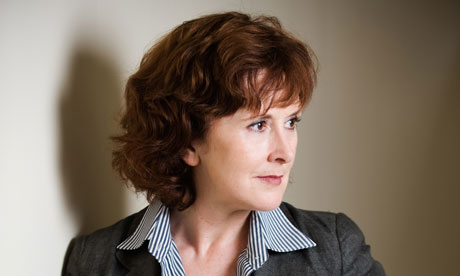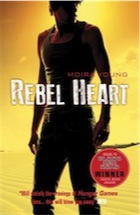Moira Young
The Costa award-winning author of Blood Red Road shares her top tips for creating fictional female heroes that live, breathe and fight on the page

'Sacrifice is the hallmark of the best heroes': Moira Young, winner of the Costa children's book prize for Blood Red Road
The first female hero I ever met was six inches tall, lived inside our tiny black and white TV, and danced and sang her way along the yellow brick road with her friends. It was, of course, Dorothy in the movie of The Wizard of Oz. I was four years old. There it was, the hero's journey with its archetypal elements – the call to adventure, the road of trials with its allies and enemies, the ordeal, seizing the sword (in Dorothy's case, the broomstick of the Wicked Witch) and the hero's return – all to a catchy musical score. Little wonder that female heroes and the hero's journey sank deep into my psyche and that my first books star a strong teenage girl hero.
Those are my credentials. So here it is, my Cut-Out-And-Keep Guide to Knitting Your Own Female Hero.
1. Make the stakes high
Give your hero a pressing dilemma, an important problem to solve, an urgent need that must be met. This will kick off the action and drive her through the story. It's her quest. We need to identify with her and root for her, page after page, so it should be a universal concern: success, love, death, survival, freedom, revenge, justice. At the same time, we need the quest to be deeply personal to the hero. We won't give a toss if she risks all to save the kidnapped uncle of her next-door neighbour's best friend. We might if it's her twin brother.
Not all heroes accept the high-stakes challenge willingly. A reluctant hero is fine, but if the story is to engage, they have to commit to the adventure sooner rather than later. Dorothy is a reluctant hero. She backs off from adventure, but it grabs her anyway and flings her into Oz. She's just a farm girl from Kansas, ordinary like most of us. But her desire to get back home is so great that, with the help of her friends, she overcomes her fears, conquers every obstacle in her path, kills the witch and is hailed a hero.
Oh, and if you want to make the stakes for your hero even higher, ratchet up the tension by setting the clock ticking. Trigger the timer on the bomb, either literally or metaphorically.
2. Keep her at the centre of the action
Remember, her need to succeed in her quest is what's powering the story. She makes the decisions, for good or ill, that move the story on. I write in scenes. For each scene, I ask myself the same series of questions, including: Is the main character at the centre of the action? Is it from her point of view? If the answer is no, I rewrite it. If there's some reason she can't be at the centre and there's a danger of her being sidelined, I ensure that I don't lose her for more than five or six lines. If it isn't appropriate for her to speak or act, I give her an inner reaction or thought.
3. Put your hero in extremis
Have your plot choices push her to the edge and beyond. She needs to be tested and challenged, psychologically, emotionally and physically, over and over again as her story progresses. Her true heroic character – determined, resourceful, courageous and self-sacrificing – will be revealed by the choices she makes under pressure. Sacrifice is the hallmark of the best heroes. They're willing to give up something of value for the greater good, up to and including their own life.
4. Make her multi-layered
You want your readers to sympathise and identify with your hero. So, like a real person, she should be a complex personality. She needs to be an entire symphony, not just one note. Give her some interesting flaws: fears, weaknesses, internal contradictions and quirks. Set up conflicts in her character that will be impediments to her achieving her goal.
5. Look for real female heroes, past and present
A hero is someone we admire for their courage or outstanding achievements. They don't have to be warriors like Ripley, battling aliens in outer space, or my own character, Saba, fighting to save her brother in the future world of Blood Red Road. They're in your own family and community. Browse the biographies, autobiographies, newspapers and magazines at the library. Listen to the radio, watch the news. We live in a world where women and girls are heroes every day, in big ways and small ways. Write their stories down. You'll be inspired.
Moira Young is the author of the Dust Land trilogy, a dystopian series set in a post-apocalyptic world. The first in the trilogy, Blood Red Road, won the Costa children's book award. The second, Rebel Heart, picks up exactly where the Blood Red Road ended, with the colourful and opinionated main character, Saba, crossing a barren land, keeping her family safe from the Tonton and hoping to be reunited with Jack. The film rights for the series have been optioned by Ridley Scott's production company.

No comments:
Post a Comment